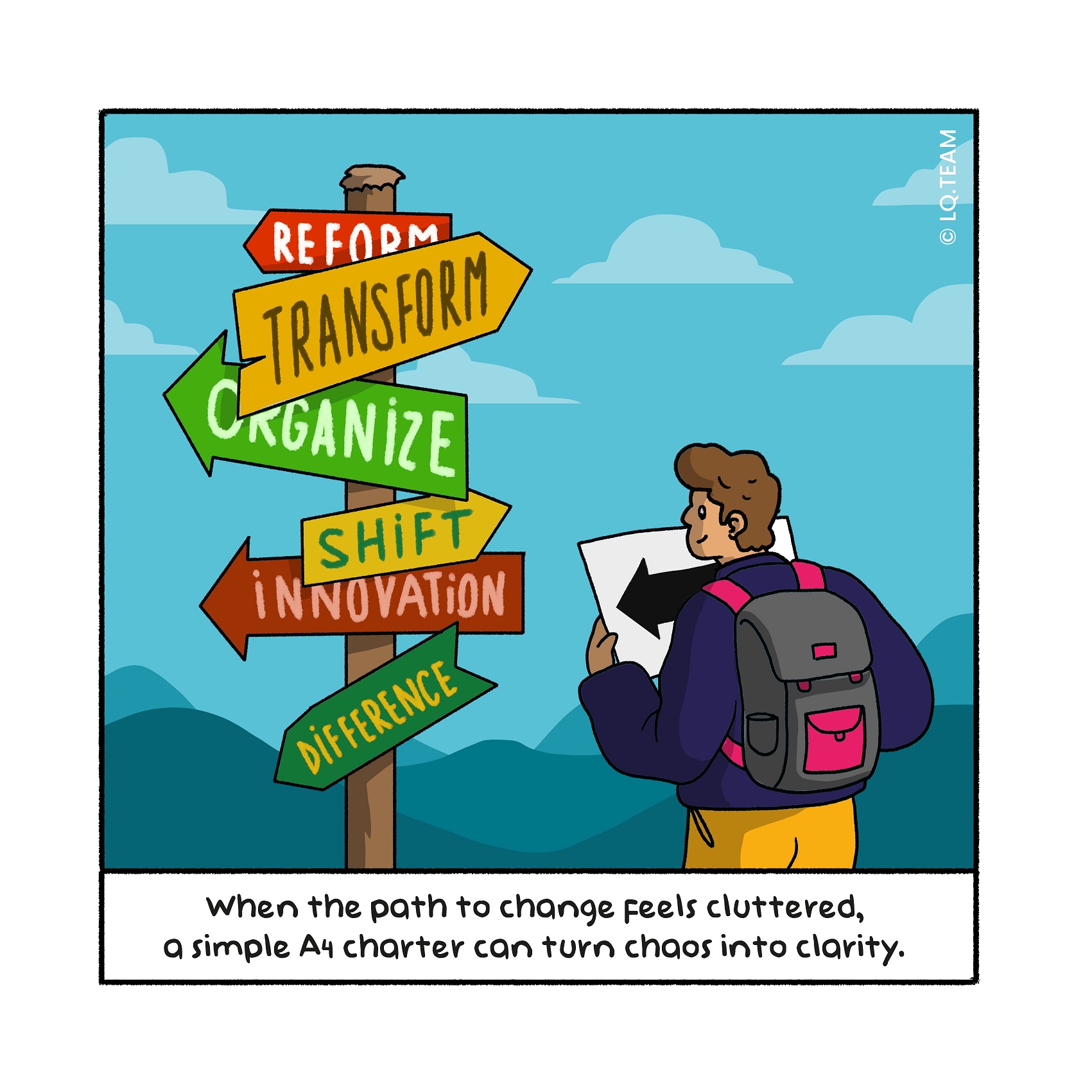
Nut to crack: How do you equip the change team to perform?
For change processes stuck or stumbling now, what commonly causes the stumbling is vague agreements about time, budget and resources and varying ideas about success. For example, will the change be successful once the new system has been delivered? Or the new system is used by people as intended and when business value is delivered? So how do you enable the change team to act on what matters? Or, differently phrased, how do you set this team up for success?
Nutcracker: Draw up an a4 charter together and sign off on it together
Keep it simple. Create a charter on one a4 sheet with the essential principles and framework, which the sponsor and the change team then sign off on. There may be more in-depth documents behind this, but this document pro- vides guidance. It is a living document that you modify proactively during the change process, if you make fundamental alterations.
Support tool: Assumptions on one a4 charter
On one a4 sheet, you include only the most essential information about a change initiative. Why are you starting this initiative? What is the desired re- sult? Who are the main stakeholders? How is this initiative related to other initiatives? Who is on the team? What investment does it require to achieve the intended benefits? What is the intended timeline? What falls inside and outside of the scope? Who decides on what? And what are the main risks, and how are they mitigated?
Tip for change leader
Ask for an a4 charter like this for both small and momentous change initiatives. This creates a focus for everyone from the beginning, making it easier to control the output quality up front without taking too much time.
Tip for change enabler
Organise a kickoff workshop for each new project team, in which they kick off the first version of the a4 charter. Challenge them to formulate it very precisely, and coach on quality. If you get pushback on whether this is worth spending time on, the counter question you may ask is: “if it is not worth spending two hours of your time, what does that tell you about the value of the initiative?”
Kernel: A charter is a living document
A clear and straightforward charter enables teams to do change work without further ado. It is a living document that enables further conversations among core stakeholders.
